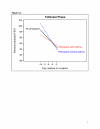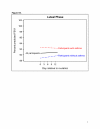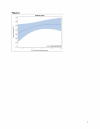Studying forced expiratory volume at 1 second over menstrual segments in asthmatic and non-asthmatic women: assessing protocol feasibility
- PMID: 22642760
- PMCID: PMC3392749
- DOI: 10.1186/1756-0500-5-261
Studying forced expiratory volume at 1 second over menstrual segments in asthmatic and non-asthmatic women: assessing protocol feasibility
Abstract
Background: Sex hormones may play an important role in observed gender differences in asthma incidence and severity, as well as in the observed changes in asthma symptoms during times of hormonal fluctuation (i.e.; premenstrual, pregnancy, etc.). This pilot study sought to demonstrate the feasibility of data collection methods to investigate the effects of sex hormones on lung function in women.
Findings: A cohort of 13 women (6 with and 7 without prior asthma diagnoses) who were having menstrual periods and were not taking hormones collected urine samples daily for measurement of estrogen (estrone E1C) and progesterone (Pregnanediol-glucuronide PDG) metabolites over the course of a menstrual segment (bleeding episode plus the following bleeding-free interval). Hormones were used to estimate menstrual segment phase (follicular versus luteal) based on a published algorithm. Daily bleeding and FEV1 measurements were recorded and percent predicted FEV1 was calculated. Percent predicted FEV1 decreased over the course of the follicular but not the luteal phase. More specifically, among women without a prior asthma diagnosis, the E1C/PDG ratio and E1C and PDG were individually associated with FEV1 in the follicular phase. No associations were found between hormones and percent predicted FEV1 in the luteal phase or among asthmatic women. E1C was associated with FEV1 in the five days before bleeding onset only among non-asthmatic women.
Discussion: A study of contiguous daily hormones and symptoms over menstrual segments from a large group of women with and without asthma is needed to better determine within-woman cyclicity of the observed patterns.
Figures






Similar articles
-
Regulatory T cells vary over bleeding segments in asthmatic and non-asthmatic women.J Reprod Immunol. 2011 May;89(2):192-8. doi: 10.1016/j.jri.2011.03.002. Epub 2011 May 6. J Reprod Immunol. 2011. PMID: 21549432 Free PMC article.
-
Body size and ethnicity are associated with menstrual cycle alterations in women in the early menopausal transition: The Study of Women's Health across the Nation (SWAN) Daily Hormone Study.J Clin Endocrinol Metab. 2004 Jun;89(6):2622-31. doi: 10.1210/jc.2003-031578. J Clin Endocrinol Metab. 2004. PMID: 15181033
-
Hormonal Profiles of Menstrual Bleeding Patterns During the Luteal-Follicular Transition.J Clin Endocrinol Metab. 2020 May 1;105(5):e2024-31. doi: 10.1210/clinem/dgaa099. J Clin Endocrinol Metab. 2020. PMID: 32115635 Free PMC article.
-
The role of female hormones on lung function in chronic lung diseases.BMC Womens Health. 2011 Jun 3;11:24. doi: 10.1186/1472-6874-11-24. BMC Womens Health. 2011. PMID: 21639909 Free PMC article. Review.
-
Perimenstrual asthma: from pathophysiology to treatment strategies.Multidiscip Respir Med. 2016 Aug 1;11:30. doi: 10.1186/s40248-016-0065-0. eCollection 2016. Multidiscip Respir Med. 2016. PMID: 27482380 Free PMC article. Review.
Cited by
-
Estrogen effects in allergy and asthma.Curr Opin Allergy Clin Immunol. 2013 Feb;13(1):92-9. doi: 10.1097/ACI.0b013e32835a6dd6. Curr Opin Allergy Clin Immunol. 2013. PMID: 23090385 Free PMC article. Review.
-
The impact of hormones on lung development and function: an overlooked aspect to consider from early childhood.Front Endocrinol (Lausanne). 2024 Sep 20;15:1425149. doi: 10.3389/fendo.2024.1425149. eCollection 2024. Front Endocrinol (Lausanne). 2024. PMID: 39371928 Free PMC article. Review.
References
-
- Centers for Disease Control and Prevention web page on asthma. http://www.cdc.gov/nchs/data/hestat/asthma03-05/asthma03-05.htm (last accessed November 30, 2010)
-
- Hankinson JL, Odencrantz JR, Fedan KB. Spirometric reference values from a sample of the general U.S. population. Am J Respir Crit Care Med. 1999;159:179–187. - PubMed

